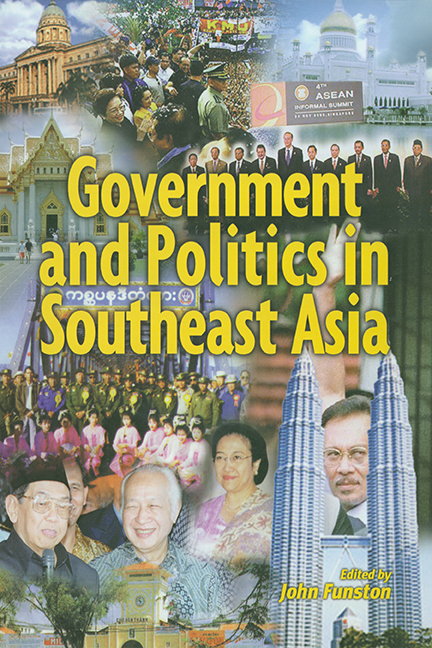7 - PHILIPPINES
Continuing People Power
Published online by Cambridge University Press: 21 October 2015
Summary
INTRODUCTION
On 12 June 1998, the Philippines celebrated 100 years of independence from Spanish colonialism. It was a century since the country declared itself a nation-state, an independent republic after 333 years under Spanish colonial rule. Though the first country in Asia that gained its independence through a bloody revolution the Philippines immediately had to accept American hegemony for another 46 years and Japanese rule for a brief three years. The birth of the Philippine nation-state in 1898 and granting of political independence by the Americans in 1946 are historical milestones in the country's history that reflect the Filipinos resolve to self-govern and determine their future as one country sans foreign colonizers.
Characteristic of a vibrant democracy, internal divisiveness and conflict between and among classes, ideologies, and ethnicities, replaced the national solidarity exhibited by the people in their anti-colonial struggles immediately after America shifted the reins of government to Filipinos. Philippine history has been characterized by the dualisms of colonialism and neocolonialism, revolution and counter-revolution, and dictatorship and democracy. The difficult but exciting process of making and unmaking of a liberal democratic nation-state remains a continuing one. The country is shaped by its past, in defining its vision, national goals and objectives, policies, institutions, structures, and processes. Achieving national unity in diversity continuous to be a daunting task in the post-colonial era.
Archeological and anthropological evidences show that a thriving civilization already existed in the islands before the arrival of the first European explorers. Beginning about 1000 BC, these original inhabitants of what became the Philippine nation were joined by migrating Malays, Negritos, and Indonesians.
- Type
- Chapter
- Information
- Government and Politics in Southeast Asia , pp. 252 - 290Publisher: ISEAS–Yusof Ishak InstitutePrint publication year: 2001



